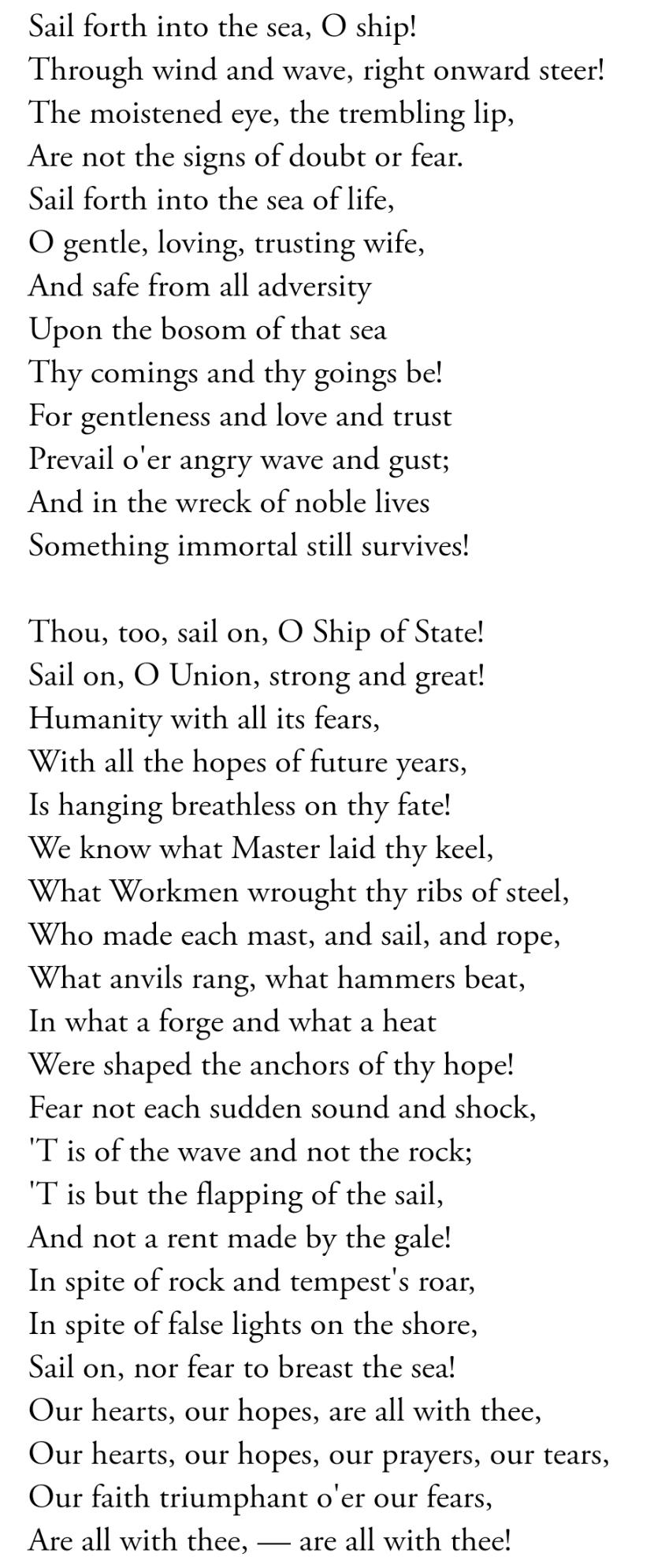


This old page will no longer exist after July, 2022.ĪO is an affiliate of Living Book Press, which mean that when you purchase from we receive a commission which allows us to keep offering AO for free.ĪO is a participant in the Amazon Services LLC Associates Program, an affiliate advertising program designed to provide a means for sites to earn advertising fees by advertising and linking to .ĭownloadable Booklist for Yrs 1-12 on Google DocsĬopyright © 2002-2021 AmblesideOnline. AO's poetry pages can now be accessed at. I breathed a song into the air, It fell to earth I knew not where For who has sight so keen and strong, That it can follow the flight of song? Long, long afterward, in an oak I found the arrow, still unbroke And the song, from beginning to end, I found in the heart of a friend.AmblesideOnline Poems of Henry Wadsworth Longfellow 1807-1882

I shot an arrow into the air, It fell to earth, I knew not where For, so swiftly it flew, the sight could not follow it in its flight. He notes, “It came into my mind as I stood with my back to the fire, and glanced on to the paper with arrow’s speed. He wrote this specific poem on 16th of October, 1845 before church. The publication pictured above includes The Arrow and the Song first printed in The Belfry of Brugs and Other Poems. Chapters in the book include, Voices of the Night, Earlier Poems, Translations, Ballards and Other Poems, and Miscellaneous. The inside cover of Poems by Longfellow is inscribed by Carrie Shields to Frank Maxwell, Class of 88. Two of the four poems mentioned above were published in a volume simply titled, Poems by Longfellow and include many of Longfellow’s collections from Voices of the Night, Ballards and Other Poems by Henry Wadsworth Longfellow. During the height of whaling, the village of Mystic, also referred to as Greenmanville, was one of the leading ship-building centers in CT. Certainly a whaling master or ship-wright would find Longfellow’s “The Building of a Ship” inspirational and reassuring, especially during a storm at sea.īuild me straight, O worthy Master! Stanch and strong, a goodly vessel, That shall laugh at all disaster, And with wave and whirlwind wrestle!…Sail forth into the sea, O ship! Through wind and wave, right onward steer!…Sail forth into the sea of life, … Prevail o’er angry wave and gust And in the wreck of noble lives something immortal still survives!…Fear not each sudden sound and shock, ‘T is of the wave and not the rock ‘T is but the flapping of the sail, And not a rent made by the gale! In spite of rock and tempest roar, In spite of false lights on the shore, Sail on, nor fear to breast the sea! Our hearts, our hopes, are all with thee, Our hearts, our hopes, our prayers, our tears, Our faith’s triumphant o’er our fears, Are all with thee, - are all with thee! The gift of a poetry book and recitation of The Light of Stars from Elena’s father on her tenth birthday four stanzas from Flowers are copied and tied around a nosegay and presented to Elena as a gift Elena reads The Arrow and the Song to her dearest friend Abigail as they sit under a Koa tree at the home Abigail’s parents’ home in Lahaina, Maui and four closing stanzas from The Bridge are recited romantically to Elena by her new beau William.Įlena’s father, captain of the Albion out of Stonington, CT is also a fan of Longfellow’s. Longfellow is also the favorite poet of Elena Ashby Brock (the protagonist) in my historical novel Tryst with Fate.Įxcerpts from each poem make a cameo appearance through several pivotal scenes of Tryst with Fate. He is by far my favorite nineteenth century poet. The four poems I find most inspirational are: Flowers (1824) The Light of Stars (1824) The Arrow and the Song (c. A 1866 collection of Longfellow poems called Flower-De-Luce includes a poem that became a popular Christmas Carol, “Christmas Bells”, better known as ‘I Heard the Bells on Christmas Day’. Two other beloved poems, “The Bridge” and “The Building of a Ship” are included in the collections entitled A Belfry of Brugs and Other Poems, and The Seaside and the Fireside, respectively. Published in 1839, Voices of the Night, included two of my favorite poems “The Light of Stars” and “Flowers”. By 1850, he was widely published with over six collections, including Voices of the Night, Ballards and Other Poems, and The Seaside and the Fireside. Henry Wadsworth Longfellow/Courtesy Brooklyn Museumīy the 1850’s, Henry Wadsworth Longfellow was one of the most popular American poets of his day.


 0 kommentar(er)
0 kommentar(er)
